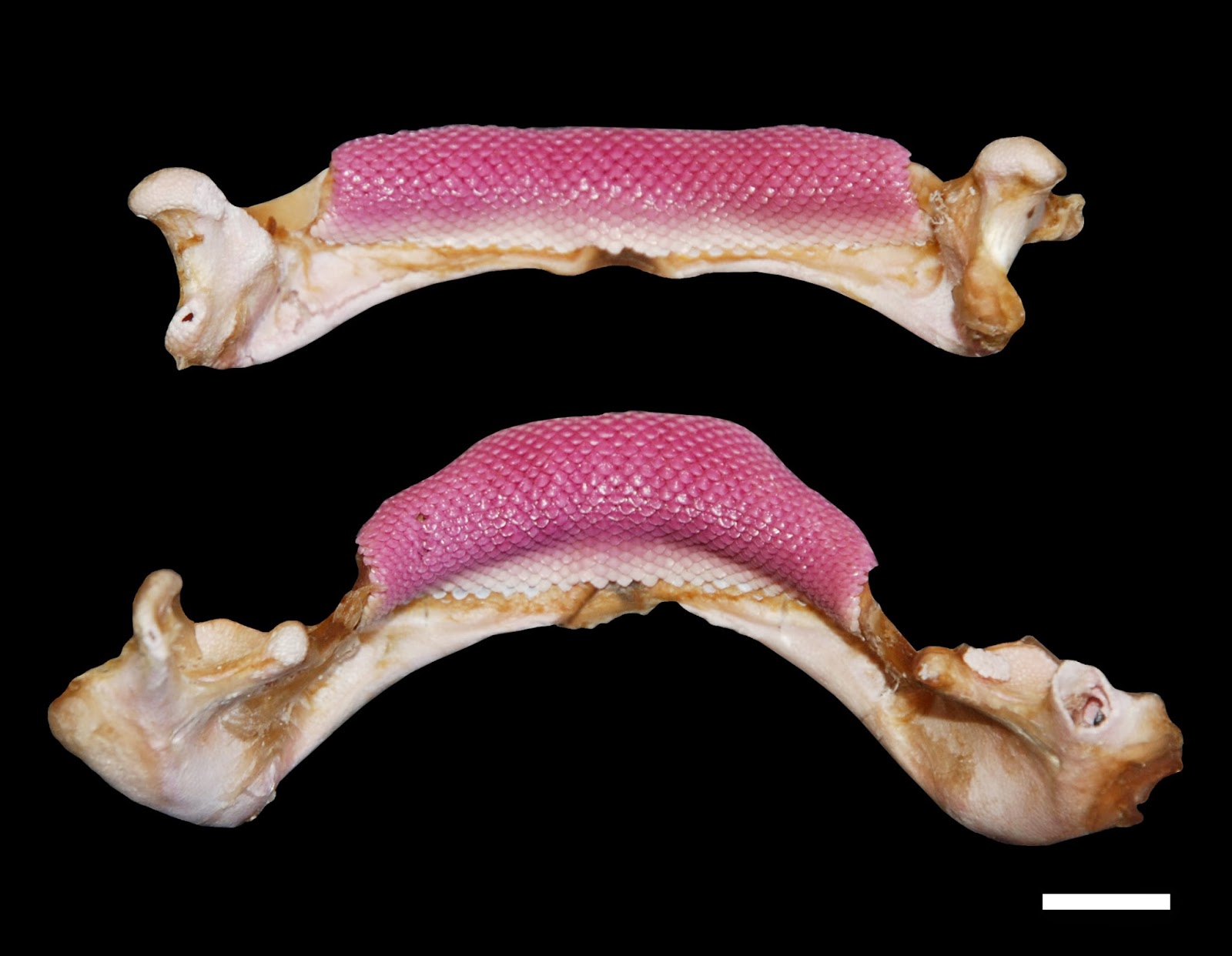I'm currently working on a couple of nicely greasy fish, so I
figured it would be a nice occasion to illustrate the issue.
Flathead catfish (Pylodictis olivaris)
First one is a partial flathead catfish skeleton, straight out of the beetles (not beetled by myself). It's not overly greasy, but you can still see the various shades of yellow and brown clearly asking for some degreasing.
American eel neurocranium (Anguilla rostrata), occipital view
Here you can clearly see liquid grease oozing from the basioccipital area. This specimen was also beetled. Maceration usually gives a head start on degreasing over beetle cleaning but results in the disarticulation of the specimen.
Mahi mahi (Coryphaena hippurus) neurocranium degreasing
I always use acetone to degrease fish material. It should be handled with care but it works very well for small vertebrates. Other degreasing techniques, especially a prolonged soak in warm water and detergent are more appropriate for larger specimens.






